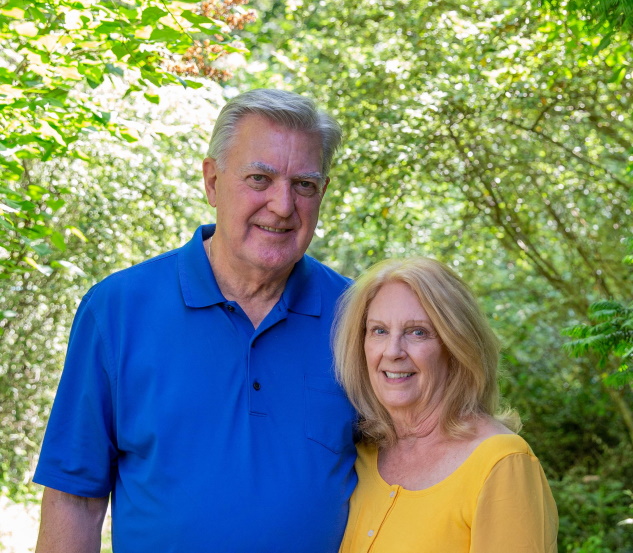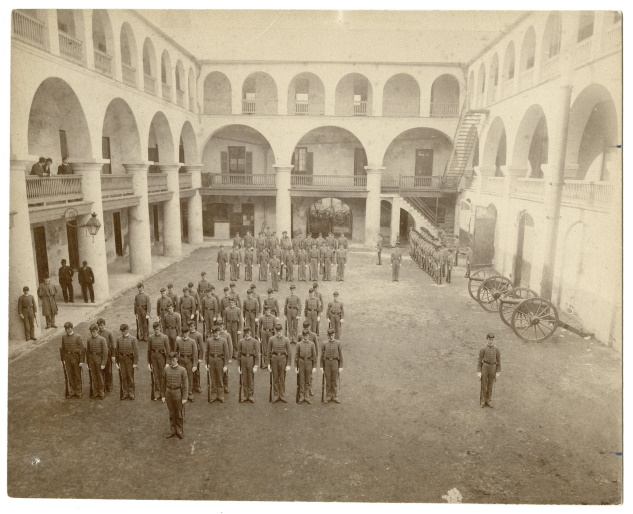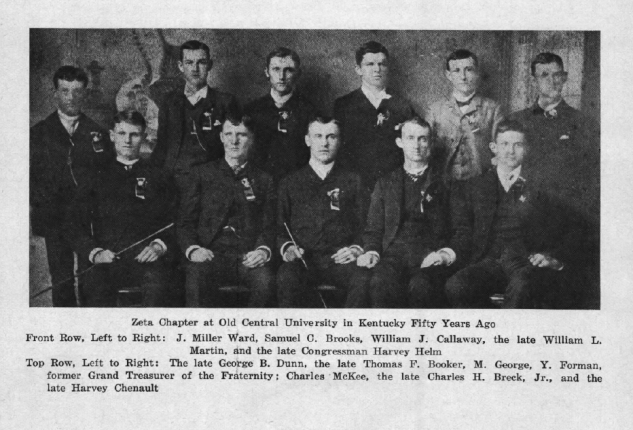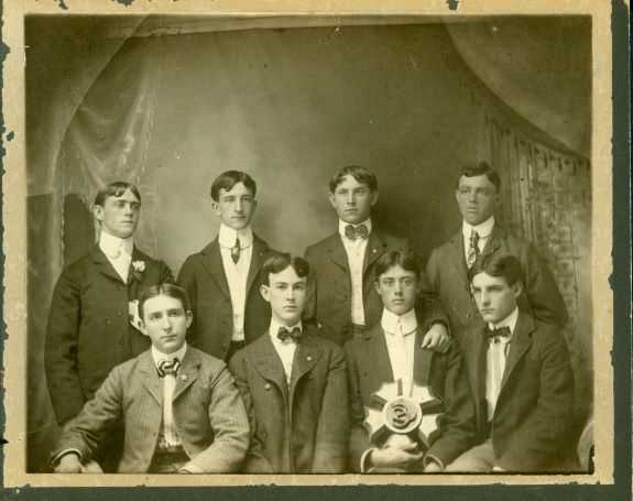 The early history of Sigma Nu is fascinating to anyone interested in the development of an organization like ours. Our founders never anticipated that Sigma Nu would expand beyond the Virginia Military Institute. But the Fraternity’s principles and appeal quickly extended to other like-minded individuals. For several years, my travels as a fraternity volunteer led me to the campuses of 15 of our earliest 23 chapters—those with single-letter designations. A few years ago, my wife, Susan, and I set a goal of visiting the remaining eight. This led to a series of emails sent to some fellow history lovers entitled “Trail of the White Star 2.0,” which was modeled after General Secretary Ernest Lee Williams (Colorado) series from the 1920s. Four of the more interesting visits are documented here.
The early history of Sigma Nu is fascinating to anyone interested in the development of an organization like ours. Our founders never anticipated that Sigma Nu would expand beyond the Virginia Military Institute. But the Fraternity’s principles and appeal quickly extended to other like-minded individuals. For several years, my travels as a fraternity volunteer led me to the campuses of 15 of our earliest 23 chapters—those with single-letter designations. A few years ago, my wife, Susan, and I set a goal of visiting the remaining eight. This led to a series of emails sent to some fellow history lovers entitled “Trail of the White Star 2.0,” which was modeled after General Secretary Ernest Lee Williams (Colorado) series from the 1920s. Four of the more interesting visits are documented here.
Tau Chapter (The Citadel)

A trip to Charleston, South Carolina, for a wedding reception provided an opportunity to visit The Citadel, the site of Tau Chapter. While walking on campus, a friendly woman who turned out to be the school’s archivist was very helpful in providing some of the school’s history. The present campus was opened in 1922. Tau Chapter, founded in 1886, was therefore founded at the previous location, in a building that has now been converted into an Embassy Suites hotel.
The South Carolina Military Academy, later known as The Citadel, reopened in 1882 after the Civil War. Alpha Tau Omega, Kappa Alpha Order, and Sigma Alpha Epsilon established chapters in 1883. In December 1885, a petition from a local fraternity was sent to Regent Edward Arthur (VMI), who approved it. On first attempt, the petition failed to receive support from the other Grand Officers, known at that time as the Grand Chapter, as they believed that the school was an “academy” and not a college. This was later clarified, but it was also discovered that, legally, the University of South Carolina was comprised of South Carolina College, later the University of South Carolina, in Columbia, South Carolina, and South Carolina Military Academy (The Citadel). Given that Sigma Nu had a chapter at the University of South Carolina as of January 1886 and given the legal status of the colleges, it was claimed that The Citadel came under the Delta Chapter charter. Regent Arthur then sanctioned the initiation by Delta Chapter of the nine cadets in Charleston that had submitted the petition. The situation was discussed at the second convention of the Grand Chapter, held in Lexington, KY, and eventually led to the recognition of a separate chapter at The Citadel to be known as Tau Chapter.
Seven of the original men initiated by Delta Chapter became the charter members of Tau Chapter in the fall of 1886 - James W. Ouzts, Robert M. Walker, Samuel C. Boylston, Elliot C. McCants, James T. Coleman, Augustus G. Miller, and Lewis W. Haskell. According to John C. Scott’s The Story of Sigma Nu, Tau Chapter quickly grew and was recognized as one of the "finest bodies of collegians that ever had entered Sigma Nu," excelling in academics and military rank. The South Carolina legislature banned fraternities at all state institutions in 1897, but Tau Chapter had already closed in response to a similar ban by the institution in 1891. Scott points out that "Fraternities at the Citadel had existed contrary to a rule which had not been enforced by the faculty for a number of years, the Greek-letter societies operating sub rosa, yet not without general knowledge of their activity." Consequently, one of Sigma Nu's finest chapters at the time gave up its charter. Tau Chapter operated sub rosa during its entire existence.
Zeta Chapter (Central University)
A trip to Indiana for another wedding reception provided the opportunity for our longest driving adventure - almost 2000 miles - and visits to the sites of additional single-letter chapters, including Zeta, Chi, and Omicron. Our first stop was in Richmond, Kentucky, and the site of Zeta Chapter and Central University of Kentucky. Eastern Kentucky University now occupies the land on which Central University was located and hosts our Theta Theta Chapter. Central University merged with Centre College in Danville, Kentucky, in 1901. Although I had visited EKU many times as a collegian and later as a Division Commander, it was during this visit to see the site of Zeta that I became aware of the linkage with Central University.
A plaque located on the EKU campus provides a history of Central University. The institution was founded in 1874 as a result of a split in the Presbyterian Synod of Kentucky. The merger into Centre occurred after operations failed at Central. Although Centre College today has a small number of national fraternity chapters, Sigma Nu does not have a presence there. Central University’s primary building was retained when EKU was founded in 1906 and was the site of the founding of Zeta Chapter. I learned from a helpful staff member that the interior was gutted in the 1990s, and new classrooms were created in the basement and first floor. The 2nd and 3rd floors are connected to the adjacent modern library building and are used as library facilities.
Zeta was originally founded as Chapter XIII when the Roman numeral nomenclature was used. It owed its founding to a linkage with Chapter XI (now Lambda) at Washington & Lee University and the friendship between Past Grand Officer M. George Y. Forman of Zeta Chapter and Mathew Clay and Walter Northcutt of Lambda Chapter. Forman was known for his discretion and organizing talent. He initiated four other men after receiving the Ritual, but before the chapter was fully organized —Lamme Givens, Owen Davis, Charles McKee, and Samuel Brooks. The chapter first held its sub rosa meetings in a room on the third floor of a grocery store before renting a more appropriate meeting room in a local dwelling.
One of Zeta's most illustrious alumni was Clarence Woods. Brother Woods served the Fraternity in many ways—as Grand Recorder for many years, as Editor of The Delta, and as a key participant in the revival or founding of several chapters. At the 20th Grand Chapter in 1921, he gave his jewel-encrusted badge, rumored to be the costliest Sigma Nu badge created, to the Fraternity for use as the Regent’s badge. It was eventually replaced by the current Regent’s badge and was retired to the museum in the Fraternity’s headquarters in Lexington, Va.

Chi Chapter (Cornell College)
 The site of the second single-letter chapter that we visited on our long drive, Chi Chapter, was founded at Cornell College in Mt. Vernon, Iowa, which is a short distance from Cedar Rapids. The archivist there was very helpful in providing information regarding the school’s history and the role of literary societies, but the archives yielded limited information about any other organizations.
The site of the second single-letter chapter that we visited on our long drive, Chi Chapter, was founded at Cornell College in Mt. Vernon, Iowa, which is a short distance from Cedar Rapids. The archivist there was very helpful in providing information regarding the school’s history and the role of literary societies, but the archives yielded limited information about any other organizations.
The school was founded in 1853 under the sponsorship of the Methodist Episcopal Church. Literary societies were created and sponsored by professors at the school. The Miltonian Society recently celebrated 150 years, and the Adelphian and Amphictyon Societies have existed for over 100 years. Phi Kappa Psi founded a chapter in 1868, but the literary societies convinced the faculty to pass an anti-fraternity rule in 1871. Fifteen years of sub rosa activity by Greek-letter groups followed when a petition was made by a group led by Carl Lane Clemans to Sigma Nu. At that time, Sigma Nu was having internal debates regarding expansion—specifically, the number and type of campuses. Grant Harrington (Kansas), who was still in law school at Kansas, was serving as Assistant Grand Recorder and Editor of The Delta. He was a proponent of expanding to small church-sponsored, well-endowed schools like Cornell College before expanding to state universities like the University of Iowa. Smaller-school students tended to go to schools such as Iowa for post-graduate work. Three of the four High Council members approved the petition from the group at the college, but the Regent failed to respond. With commencement approaching and a desire to get seniors like Clemans initiated, Harrington approved the petition without the Regent's response, telegraphing approval the week before commencement.
The following year, the major literary societies were headed by Sigma Nus. But the year following that, based on strong student sentiment, the faculty invoked the anti-fraternity rule again. Clemans returned and initiated two new members, which began almost 25 years of sub rosa activity before national Greek-letter organizations were banned completely. The literary societies continued to thrive and took on Greek-letter designations, operating as local fraternities and sororities rather than the debate-based organizations originally conceived. The difficulty that Sigma Nu and other fraternities had in surviving is evident in that there is no mention or photograph of any Greek-letter organization in any yearbook from the first in 1888 through the one in 1913 when Chi Chapter became dormant.
Cornell is a beautiful campus. It's located close to an area along the Cedar River called the Palisades. Cornell students have historically used the area as a gathering place. Sigma Nu even built a lodge called the Cliff House there and used it for meetings and Ritual ceremonies. The building was used for public social events after the chapter became dormant and was eventually torn down.
It's most interesting that Chi Chapter represented the meeting of two Sigma Nu legends who were among the earliest inductees into the Hall of Honor--Carl Lane Clemans and Grant Harrington. Both were ardent supporters of expansion and played a role in creating several other chapters.

Omicron Chapter (Bethel College)
The next leg of our trip took us to Russellville, Kentucky, the original site of Bethel College and Omicron Chapter. Some research online about Omicron Chapter yielded an old photo of eight men, with one holding a large Sigma Nu badge plaque. This photo was in the special collections area of the Western Kentucky University library in Bowling Green. My wife and I met with the archivist there, who was most helpful in finding information about Bethel and Omicron. Bethel College closed in 1933 and was merged into Georgetown College in Kentucky, at which time most files were transferred to Georgetown (both schools were originally organized by the Baptist church). The granddaughter of a Sigma Nu at Bethel, however, donated the alumnus' files to WKU, which included the photo. Unfortunately, the individuals in the photo, likely taken around 1900, were not identified.
As is pointed out in The Story of Sigma Nu and The Heritage History of Sigma Nu by H. Randall Capps (Kentucky Wesleyan), Omicron Chapter had a very interesting start. William Linn Martin was a member of Zeta Chapter at Central University and convinced two friends who were students at Bethel - Harry M. Hill and Herman Morris - to start a new chapter. The two were initiated on August 20, 1884, in a barn, which was considered the safest place to hold the secret ceremony. It occurred in a rear stall with a borrowed family Bible resting on a feed rack. Despite the unusual location, John C. Scott wrote, "The initiation was conducted with much solemnity, the setting adding charm to the revelation of the mysteries." These two men selected four others to join them when returning to the Bethel campus and the six became the charter members of Omicron.
The chapter grew fairly quickly to 14 and became an important chapter of Sigma Nu. One of the initiates added just after the initial group was Harvey S. McCutcheon, who founded Beta Omicron Chapter at the University of the South (Sewanee). Another initiate, Sidney E. Bradshaw, assisted in revitalizing Beta Chapter at Virginia and affiliated there. Brother McCutcheon likely assisted in the acquisition and improvement of the chapter's "hall," which was a room below the belfry of the main college building. The room had previously been used by Phi Gamma Delta, which was inactive at the time of Omicron's founding.
We visited Russellville to see what little was left of Bethel College. Although the college had amassed a decent endowment, it was unfortunately not large enough for operations to continue during the Great Depression when the Russellville campus closed (a campus for female students existed in Hopkinsville, Kentucky, until 1965). All of the school's primary buildings in Russellville had been razed by 1968. One of the major buildings was Main Hall, which contained the belfry room where Sigma Nu met. It was started in 1852, completed in 1854, and razed in 1968. The site on which it was located is now occupied by a fairly new bank building. Nimrod Long Hall, begun in 1849, was added in 1877 as a dormitory housing 100 students but was converted to apartments around the end of World War II and burned in 1947. The only physical remnants of that building, and effectively the campus, are portions of the building used to construct the house that occupies the site, a gate, and an iron fence. Nimrod Long was a member of the Bethel College Board of Trustees for thirty years and president and treasurer for most of that time. He was also instrumental in the creation of a "village" of eight homes just outside the campus fence that provided housing for married students. Only one of these remains today and appears to be deserted.

Summary
Sigma Nu’s history is rich with a variety of difficulties, incidents, obstacles, and successes in the establishment of chapters beyond the gates of VMI. But the consistent theme has been and continues to be that men who value Love, Honor, and Truth will lead Sigma Nu to even greater heights.